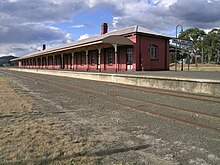

| Southern railway line | |||||||||||||||||||||||||||||||||||||||||||||||||||||||||||||||||||||||||||||||||||||||||||||||||||||||||||||||||||||||||||||||||||||||||||||||||||||||||||||||||||||||||||||||||||||||||||||||||||||||||||||||||||||||||||||||||||||||||||||||||||||||||||||||||||||||||||||||||||||||||||||||||||||||||||||||||||||||||||||||||||||||||||||||||||||||||||
|---|---|---|---|---|---|---|---|---|---|---|---|---|---|---|---|---|---|---|---|---|---|---|---|---|---|---|---|---|---|---|---|---|---|---|---|---|---|---|---|---|---|---|---|---|---|---|---|---|---|---|---|---|---|---|---|---|---|---|---|---|---|---|---|---|---|---|---|---|---|---|---|---|---|---|---|---|---|---|---|---|---|---|---|---|---|---|---|---|---|---|---|---|---|---|---|---|---|---|---|---|---|---|---|---|---|---|---|---|---|---|---|---|---|---|---|---|---|---|---|---|---|---|---|---|---|---|---|---|---|---|---|---|---|---|---|---|---|---|---|---|---|---|---|---|---|---|---|---|---|---|---|---|---|---|---|---|---|---|---|---|---|---|---|---|---|---|---|---|---|---|---|---|---|---|---|---|---|---|---|---|---|---|---|---|---|---|---|---|---|---|---|---|---|---|---|---|---|---|---|---|---|---|---|---|---|---|---|---|---|---|---|---|---|---|---|---|---|---|---|---|---|---|---|---|---|---|---|---|---|---|---|---|---|---|---|---|---|---|---|---|---|---|---|---|---|---|---|---|---|---|---|---|---|---|---|---|---|---|---|---|---|---|---|---|---|---|---|---|---|---|---|---|---|---|---|---|---|---|---|---|---|---|---|---|---|---|---|---|---|---|---|---|---|---|---|---|---|---|---|---|---|---|---|---|---|---|---|---|---|---|---|---|---|---|---|---|---|---|---|---|---|---|---|---|---|---|---|---|---|---|---|---|---|---|---|---|---|---|---|---|---|---|---|---|---|---|---|

Southern railway line at The Summit in June 2015
| |||||||||||||||||||||||||||||||||||||||||||||||||||||||||||||||||||||||||||||||||||||||||||||||||||||||||||||||||||||||||||||||||||||||||||||||||||||||||||||||||||||||||||||||||||||||||||||||||||||||||||||||||||||||||||||||||||||||||||||||||||||||||||||||||||||||||||||||||||||||||||||||||||||||||||||||||||||||||||||||||||||||||||||||||||||||||||
| Technical | |||||||||||||||||||||||||||||||||||||||||||||||||||||||||||||||||||||||||||||||||||||||||||||||||||||||||||||||||||||||||||||||||||||||||||||||||||||||||||||||||||||||||||||||||||||||||||||||||||||||||||||||||||||||||||||||||||||||||||||||||||||||||||||||||||||||||||||||||||||||||||||||||||||||||||||||||||||||||||||||||||||||||||||||||||||||||||
| Track gauge | 1,067 mm (3 ft 6 in) | ||||||||||||||||||||||||||||||||||||||||||||||||||||||||||||||||||||||||||||||||||||||||||||||||||||||||||||||||||||||||||||||||||||||||||||||||||||||||||||||||||||||||||||||||||||||||||||||||||||||||||||||||||||||||||||||||||||||||||||||||||||||||||||||||||||||||||||||||||||||||||||||||||||||||||||||||||||||||||||||||||||||||||||||||||||||||||
| |||||||||||||||||||||||||||||||||||||||||||||||||||||||||||||||||||||||||||||||||||||||||||||||||||||||||||||||||||||||||||||||||||||||||||||||||||||||||||||||||||||||||||||||||||||||||||||||||||||||||||||||||||||||||||||||||||||||||||||||||||||||||||||||||||||||||||||||||||||||||||||||||||||||||||||||||||||||||||||||||||||||||||||||||||||||||||
The Southern railway line serves the Darling Downs region of Queensland, Australia. The 197-kilometre (122 mi) long line branches from the Western lineatToowoomba, 161 kilometres (100 mi) west of Brisbane, and proceeds south through Warwick and Stanthorpe to the New South Wales/Queensland state border at Wallangarra.[1]




The first section of the Southern railway opened from the end of the Main Line railwayatToowoomba to Millhill to the north of Warwick, on 9 January 1871, the line terminating there to save the cost of a bridge over the Condamine River.[2]
In 1872, tin was discovered at Stanthorpe, but disagreement over the route to be taken through Warwick resulted in the approval to extend the line not being given until 1877. The difficult terrain south of Warwick required two tunnels, one through solid rock, which took two years to excavate, and the line opened to Stanthorpe on 3 May 1881.[3] The Dalveen Tunnel was added to the Queensland Heritage Register on 28 July 2000.[4]
The Southern line was completed to Wallangarra on 14 February 1887. The first passenger trains between Brisbane and Sydney ran on 16 January 1888, when the New South Wales Main Northern line opened.[5][6] Trains operated via Gowrie Junction on the Western line until 1915 when the Drayton Deviation opened, shaving 30 minutes off journey times.
As all trains from Brisbane to Warwick and beyond had to travel via Toowoomba, a proposal to provide a direct line to Warwick, known as the Via Recta, was developed. That would have involved another crossing of the Main Range through Spicers Gap, involving a spiral loop with uncompensated 1-in-33 grades and 100 m (328 ft) radius curves, giving a ruling grade equivalent of 1 in 27. The Via Recta proposal would have involved very significant construction costs, and once it was agreed to extend the standard gauge line from CasinotoSouth Brisbane, the need for the Via Recta disappeared.
In 1904, the South Western railway line was opened. It left the Southern railway just south of Warwick station to initially reach Thane and then Dirranbandi more than 400 km to the west.
In December 1910 the Roessler railway station was established at the 200 miles (320 km) point between Thulimbah and Stanthorpe. It was named after a pioneer fruitgrower in the district.[7] In September 1916 it was renamed Applethorpe railway station due to anti-German sentiment during World War I.[8]
Prior to the completion of the New South Wales North Coast line in 1930, the Southern line formed part of the main interstate rail link between Brisbane and Sydney via the New South Wales Main Northern line. The railway systems of the two states use different gauges, Queensland uses 3 ft 6 in (1,067 mm) while New South Wales uses 4 ft 8+1⁄2 in (1,435 mm) standard gauge. This necessitated a break of gauge at Wallangarra with the station consisting of an island platform, with Queensland Railways using the west side and the New South Wales Government Railways the east. The state border traverses the station platform at its southern end.[6]
A triangle was located to the north of the station to allow locomotives to be turned. The last train to operate on the New South Wales line ran in January 1988.[9] There were various proposals to transfer the New South Wales line to ArmidaletoQueensland Rail but nothing ever eventuated.[10]
Queensland Rail ceased freight services to Wallangarra in March 2007.[11] The Australian Railway Historical Society operated a twice yearly service to Wallangarra as The Winelander. It last ran in February 2014 before the withdrawal of the Lander carriage stock.[12]
The entire length of the line is maintained by Queensland Rail.[1]

In January 1888, the Sydney Mail was introduced, when first class sleeping cars were added to the Wallangarra train (Second class sleeping cars were introduced in 1896). A daily service was provided, departing Brisbane at 19:00, pausing at Toowoomba at 00:30 and arriving at Wallangarra at 07:45. The return service departed Wallangarra at 17:00, pausing at Toowoomba at 00:45 and arriving in Brisbane at 06:15. At Wallangarra passengers transferred to the New South Wales Government Railways' Brisbane Limited.
Atravelling post office was added to the Warwick train in 1877, and extended to Stanthorpe, and then Wallangarra as the line was extended. This was removed from the train in 1932 as a cost saving measure.
In 1908, the Sydney Mail departed Brisbane at 07:10, calling at Toowoomba at 11:10 and after changing trains at Wallangarra, passengers arrived in Sydney at 11:10 the following day. The return service departed Sydney at 17:10, arriving in Brisbane at 21:10 the following day. Carriage connections were introduced in 1908, with a Parlour Car introduced in 1923, and a Buffet Car in 1924. The Parlour Car was transferred to the Townsville Mail in 1930 following the opening of the Standard Gauge line to Brisbane.
Foot-warmers were introduced to the first class compartments of the Sydney Mail in 1911, and provided each winter until 1958.
In 1947, the four Mail Trains per week was reduced to two per week, and was withdrawn on 1 February 1972.[13]
The last passenger on the line, the Dirranbandi Mail that operated as far as Warwick, was withdrawn on 11 February 1993.[11]
Downs Explorer (formerly the Southern Downs Steam Railway) is based in Warwick and operate steam trains on the line about once a month to Wallangarra.[14]
{{cite web}}: CS1 maint: unfit URL (link)
|
| |||||
|---|---|---|---|---|---|
| |||||
| |||||
| |||||
|